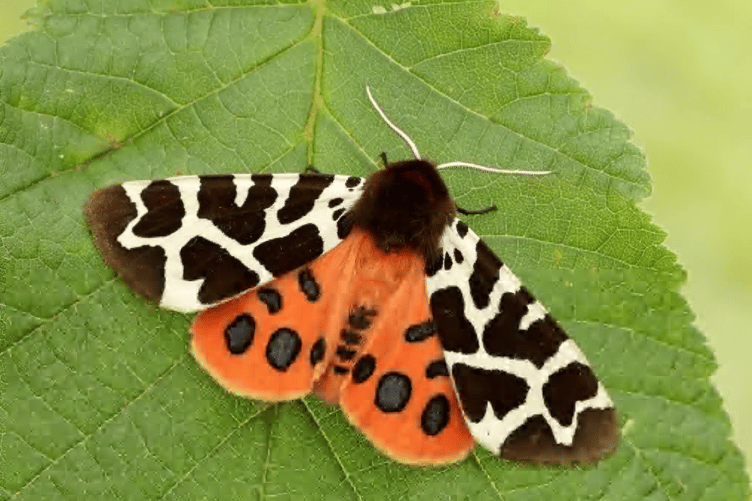How well do you know moths? Perhaps you overlook them in favour of butterflies, so let’s first dispel the misconception that moths are less colourful than butterflies, for there are many brightly coloured moths and many dull, brown butterflies!
Our native moths come in a stunning array of colours and patterns, from the bright red cinnabar moth and pink and green candy-striped elephant hawk-moth to the gold-coloured yellow shell.
Even brown moths are beautiful, with subtle markings and incredible camouflage.
More than 2,500 moth species live in Britain, in a wide range of habitats. By comparison, we have just 60-or-so species of butterfly.
For many, moths are creatures of the night-time – and only during the summer months. Yet different species are active across certain times of the year.
Our resident moths vary greatly in size, from the huge privet hawk-moth with a wingspan of up to 120mm, to tiny moths measuring in at just 3mm.
Although most moths fly during darkness, several species can be seen during the day. The day-flying moths you’re most likely to see are the cinnabar moth, five-spot burnet moth and six-spot burnet moth.
You may spot the Mother Shipton moth, which has the outline of a witch’s face etched onto its wings. Or perhaps the spectacular male emperor moth: the males fly during the day but the females only at night.
You’re increasingly likely to see the Jersey tiger moth.
It was very rare in Britain until recent years and used to be confined to small pockets along the south coast, notably in Devon, but its range has been spreading northwards and eastwards.
After I featured the Jersey tiger last summer, many readers emailed to say they had seen this spectacular moth in their gardens and provided photos. If it has become established locally we are likely to see many sightings again this year, so look out.
How many moths can you identify? Can you tell a pale brindled beauty from an old lady or Mother Shipton – or even a dark bordered beauty?
If you’d like to be able to identify them better, moth expert Dr Phil Sterling is hosting a free series of online events. Each of the four-part series gives tips and advice on identifying the moths you see and there’ll be time to ask Phil your questions.
The next online event will be tomorrow (February 28, 2024), with others on March 6 and 13, all between 7pm and 8.30pm. To sign up, visit http://tinyurl.com/2fpjfwbn
Some moth species are similar in appearance to others, while in some species there are extreme variations in appearance from one moth to another.
However there are a number of moth species that are distinct and offer an excellent introduction to the world of moths.
Various organisations have posted web pages with distinctive moths for beginners to spot. The Woodland Trust’s blog page has 12 to look out for: see http://tinyurl.com/3xvm3kt7
The Wildlife Trusts’ web page has 16 distinctive moths to spot: see www.wildlifetrusts.org/identify-moths
Meanwhile NHBS, primarily a supplier of books and equipment to those who work to understand, protect, and conserve the natural environment, has compiled a list of 19 moths to look out for: see http://tinyurl.com/2wvebxb2
There are several good websites to help you identify moths you see. Probably the best is the Butterfly Conservation charity’s website www.butterfly-conservation.org which has lots of information on moths as well as butterflies.
Before signing-off, let’s dispel the misconception that moths eat clothes.
In fact, of the 2,500 moths species that live in the UK, very few are tiny clothes moths and it isn’t the moths themselves that eat clothes but their caterpillars.
Clothes moth caterpillars can be picky about what they eat so, if you’re worried about your clothes, bear in mind that they only eat fabrics, like wool, they usually target clothes left in dark undisturbed places, and they prefer dirty clothes to clean clothes.





Comments
This article has no comments yet. Be the first to leave a comment.